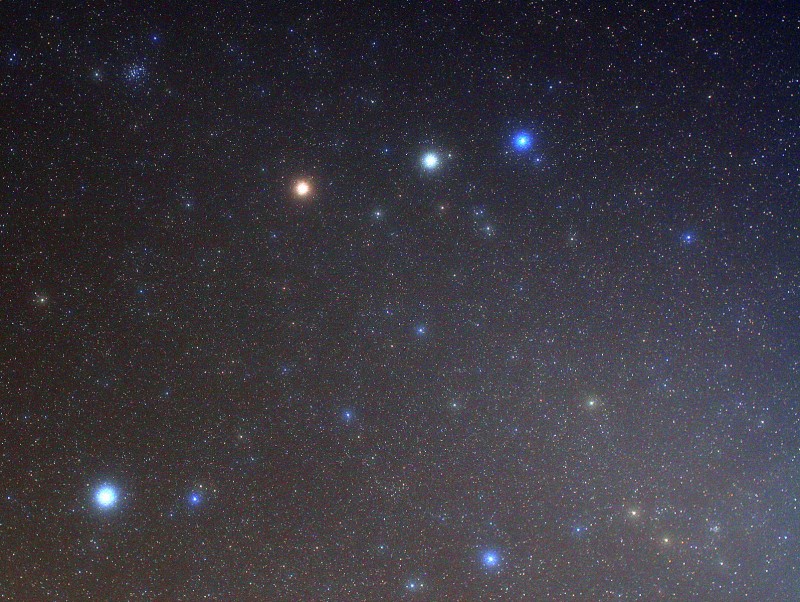
|
Credit & Copyright: Doug Zubenel
(TWAN)
Explanation:
Wandering through
the evening sky,
on May 4th planet Mars
stood in line with Castor and Pollux,
the two bright stars of the constellation
Gemini.
In this time exposure of the celestial alignment,
Mars actually takes on a distinct yellowish
hue, contrasting in color with
Pollux;
a giant star known to have a
Jupiter-class planet,
and
Castor;
itself a multiple star system.
Though in
mythology
Pollux and Castor are twin brothers,
the two stars are physically unrelated and are about 34 and 50
light-years distant respectively.
Included in the skyview are
Procyon,
alpha star of Canis Minor, and
famous star cluster M44 also known as the
Beehive Cluster.
Dust in our own solar system reflecting sunlight
creates the faint band of
Zodiacal light emerging from the
lower right corner of the frame.
Just put your cursor over the picture for help
with identifications.
Of course, bright Mars can still
be
found in the western
evening skies and tonight wanders
near the crescent Moon.
digg_url = 'http://apod.nasa.gov/apod/ap080510.html'; digg_skin = 'compact';
|
January February March April May June July August September October November December |
| ||||||||||||||||||||||||||||||||||||||||||||||||
NASA Web Site Statements, Warnings, and Disclaimers
NASA Official: Jay Norris. Specific rights apply.
A service of: LHEA at NASA / GSFC
& Michigan Tech. U.
Based on Astronomy Picture
Of the Day
Publications with keywords: Mars - stars
Publications with words: Mars - stars
See also:
- APOD: 2025 September 28 Á Leopard Spots on Martian Rocks
- APOD: 2025 August 28 Á Galaxies, Stars, and Dust
- APOD: 2025 July 15 Á Collapse in Hebes Chasma on Mars
- APOD: 2025 July 6 Á The Spiral North Pole of Mars
- APOD: 2025 June 29 Á Dark Sand Cascades on Mars
- APOD: 2025 June 22 Á A Berry Bowl of Martian Spherules
- APOD: 2025 June 15 Á Two Worlds One Sun
